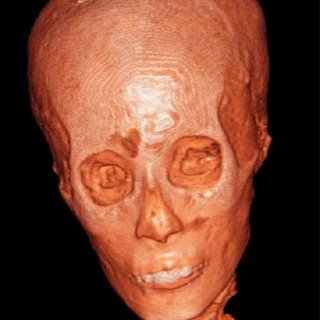New egiptian tombs

There is a place in Egypt : Luxor (before city of Thebes, located on river Nile, south of The Cairo, north of Asuán-Egypt), that encloses a lot of history and nobility. Under the surface of a terrace of this city, in The Valley of the Kings and of the Queens, was discovered in 1922, the tomb of Tutankhamen, a young king Egyptian dead at the age of 18 years -according to some because of a blow in his head given by his enemies, because he tried to re-establish the polytheism and according to others to cause of a broken leg infected. Last week 5 additional sarcophagi have been discovered in this valley, being believed they belong to Nefertiti, a queen that co-ruled Egypt overall with Akenatón, among 1379 to 1358 years b. C.
In Peru, the Inca Kings (1400-1492d.C.), were preserved mummified in Cusco. In this way they were strolled year after year along the streets of the Cusco, contributing to maintain the household and customs of the nobility nearby families. Garcilaso de La Vega (1503-1536) -the racially mixed chronicler- that says to have seen and touched the mummies, said that each mummy weighed between 5 and 6 kilograms.
In the case of the queen Nefertiti to find his tomb far from the tomb of Tutankhamen, causes supposes that she was transferred there to avoid the plunder of her tomb. In the Peruvian case it is put forward that 3 Inca mummies were transfered to Lima and buried under the surface of a hospital (Hospital San José), by the same reasons. It has been sought them intensely but itself has not been able to be found them. Aside from it, the ancients mummies have occurred ultimately in adequate model to study a series of old illnesses employing methods invasive and not invasive. Likewise from cranial digital reconstructions, it is possible to carry out quite exact facial structurings of the mummies (see picture), what on the other hand has revolutionized the forensic and criminalistic medicine.
In Peru, the Inca Kings (1400-1492d.C.), were preserved mummified in Cusco. In this way they were strolled year after year along the streets of the Cusco, contributing to maintain the household and customs of the nobility nearby families. Garcilaso de La Vega (1503-1536) -the racially mixed chronicler- that says to have seen and touched the mummies, said that each mummy weighed between 5 and 6 kilograms.
In the case of the queen Nefertiti to find his tomb far from the tomb of Tutankhamen, causes supposes that she was transferred there to avoid the plunder of her tomb. In the Peruvian case it is put forward that 3 Inca mummies were transfered to Lima and buried under the surface of a hospital (Hospital San José), by the same reasons. It has been sought them intensely but itself has not been able to be found them. Aside from it, the ancients mummies have occurred ultimately in adequate model to study a series of old illnesses employing methods invasive and not invasive. Likewise from cranial digital reconstructions, it is possible to carry out quite exact facial structurings of the mummies (see picture), what on the other hand has revolutionized the forensic and criminalistic medicine.
Nuevas tumbas egipcias
Hay un lugar en Egipto: Luxor (antes ciudad Tebas, ubicada sobre el rio Nilo, al sur del Cairo, al norte de Asuán-Egipto), que encierra mucha historia y nobleza. Debajo de la superficie de una explanada de este: el Valle de los Reyes y de las Reinas, fué descubierto en 1922, la tumba de Tutankamón, un joven rey egipcio fallecido a los 18 años -según algunos a causa de un golpe en la cabeza propinado por sus enemigos, por supuestamente haber tratado de restablecer el politeísmo y según otros a causa de una pierna rota infectada. La semana pasada se han descubierto 5 sarcófagos adicionales en este valle, creyéndose pertenezcan a Nefertiti, una reina que cogobernó Egipto de conjunto con Akenatón, entre 1379 a 1358 años a. C.
En el Perú, los Reyes Incas (1400-1492 d.C.), eran preservados momificados en el Cusco. De esta forma eran paseados año a año por la calles del Cusco, contribuyendo a mantener la unidad familiar y costumbres de las familias cercanas al poder. Garcilaso de la Vega (1503-1536) -el cronista mestizo- que dice haberlas visto y tocado, arguye que cada momia pesaba entre 5 y 6 kilos.
En el caso de la reina Nefertiti el encontrarla enterrada lejos de la tumba de Tutankamón, hace suponer que fué trasladada alli para evitar el saqueo de su tumba. En el caso peruano se aduce que 3 momias incas fueron trasladas a Lima y enterradas debajo de la superficie de un nosocomio (Hospital San José), por las mismas razones. Se las ha buscado intensamente pero no se las ha podido encontrar. Aparte de ello, las momias antiguas han devenido últimamente en modelo adecuado para estudiar una serie de enfermedades antiguas empleando métodos si y no invasivos. Asimismo a partir de reconstrucciones digitales craneales (ver foto superior), es posible realizar estructuraciones faciales bastante exactas de ella (o)s, lo que de otro lado ha revolucionado a la medicina forense y criminalistica.



.+Photo+Author.jpg)



0 Comments:
Post a Comment
<< Home